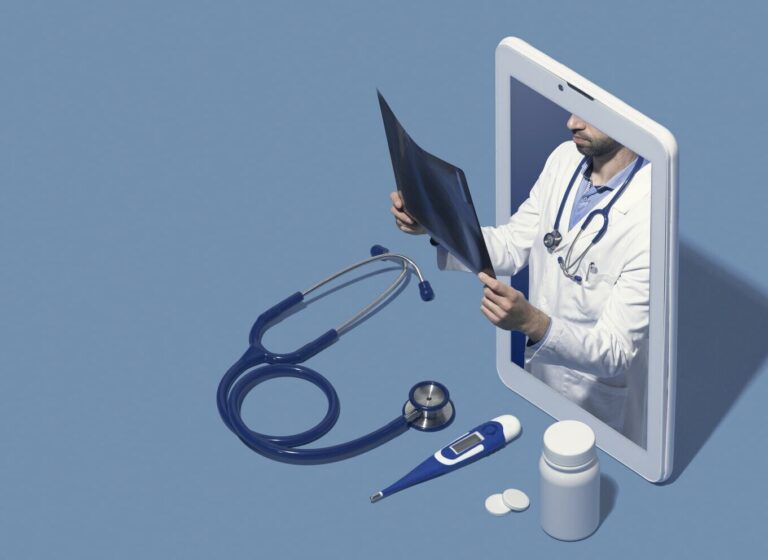In today’s fast-paced world, telemedicine is revolutionizing healthcare by offering medical consultations at the click of a button. But is telemedicine the right solution for everyone? Like any innovation, it has its advantages and drawbacks. In this article, we’ll dive deep into the pros and cons of telemedicine to help you decide if it’s a good fit for your healthcare needs.
What Is Telemedicine?
The Rise of Telemedicine in Healthcare
Telemedicine refers to the practice of providing medical services remotely through digital communication technologies. Whether it’s a virtual video consultation, phone call, or health monitoring via apps, telemedicine bridges the gap between patients and doctors—no matter the distance.
You May Like:
Can You Swallow Chewable Tablets? Myths and Facts Explained
How Telemedicine Works
Telemedicine typically involves using a smartphone, computer, or tablet to connect with a healthcare provider. Patients can share symptoms, discuss medical concerns, and even receive prescriptions—all without stepping out of their homes.
Pros of Telemedicine
Convenience and Accessibility
One of the biggest advantages of telemedicine is its sheer convenience. No more waiting rooms or long travel times—patients can schedule appointments and see a doctor from the comfort of their home. This is especially helpful for people living in remote areas or those with mobility issues.
Cost Savings for Patients
Telemedicine reduces the need for travel, childcare, or taking time off work. Many virtual consultations are also cheaper than in-person visits, making healthcare more affordable.
Faster Access to Specialists
Need a specialist? Telemedicine connects patients to doctors and experts across the globe. Instead of waiting weeks for an appointment, you can access top-tier medical advice faster and more efficiently.
Improved Patient Engagement
Virtual consultations make it easier for patients to stay on top of their health. Follow-ups, medication checks, and lifestyle advice become more accessible, leading to better treatment adherence.
Remote Monitoring Benefits
Devices like wearable health trackers allow doctors to monitor chronic conditions remotely. Blood pressure, glucose levels, and heart rates can be tracked in real time, enabling timely interventions when needed.
Cons of Telemedicine
Technology Barriers
Telemedicine relies heavily on technology. Patients without smartphones, reliable internet, or basic digital skills may struggle to access virtual healthcare services. This can widen the digital divide, especially for elderly patients.
Limited Physical Examination
While telemedicine works well for many consultations, it has limitations. Doctors cannot perform hands-on physical exams, which may be necessary for certain diagnoses or conditions.
Privacy and Security Concerns
With healthcare shifting online, protecting sensitive patient information is a growing challenge. There’s always a risk of data breaches, hacking, or unauthorized access to medical records.
Dependence on Internet Connectivity
Poor internet connections can interrupt telehealth visits, causing frustration for both doctors and patients. In rural areas with limited internet infrastructure, this remains a significant barrier.
Who Can Benefit the Most from Telemedicine?
Busy Professionals
For people juggling tight schedules, telemedicine is a lifesaver. You can consult a doctor during a lunch break or in between meetings without disrupting your day.
Elderly and Disabled Patients
Elderly patients and individuals with disabilities often find it difficult to travel to clinics. Telemedicine eliminates these challenges, offering accessible and hassle-free care.
Situations Where Telemedicine Falls Short
Emergency Cases
Telemedicine cannot replace emergency care. In life-threatening situations, such as heart attacks or severe injuries, immediate physical intervention is required.
Complex Medical Conditions
For conditions requiring detailed examinations, lab tests, or imaging, telemedicine may not be sufficient. In-person visits are still necessary to ensure accurate diagnoses and treatment plans.
Conclusion
Telemedicine is transforming the way we access healthcare, offering unmatched convenience, cost savings, and faster access to specialists. However, it does come with limitations, such as technology barriers and the inability to perform physical examinations.
So, is telemedicine right for you? It depends on your specific needs and circumstances. For routine check-ups, follow-ups, or minor medical concerns, telemedicine is a game-changer. But for emergencies or complex medical issues, in-person care remains essential.
Ultimately, telemedicine is a powerful tool that complements traditional healthcare, making medical services more accessible than ever before.
FAQs
1. What is telemedicine used for?
Telemedicine is used for virtual consultations, follow-up visits, mental health services, and chronic condition monitoring.
2. Can telemedicine replace in-person visits?
No, telemedicine cannot fully replace in-person visits, especially for emergencies or cases requiring physical exams.
3. Is telemedicine secure and private?
Telemedicine platforms prioritize data security, but like all digital tools, they carry some risk of breaches. Choose reputable platforms with strong encryption.
4. Who should consider using telemedicine?
Busy professionals, elderly patients, those in remote areas, and individuals needing routine care are ideal candidates for telemedicine.
5. What do I need for a telemedicine appointment?
You need a smartphone, tablet, or computer with a camera, a stable internet connection, and a quiet space for the consultation.


